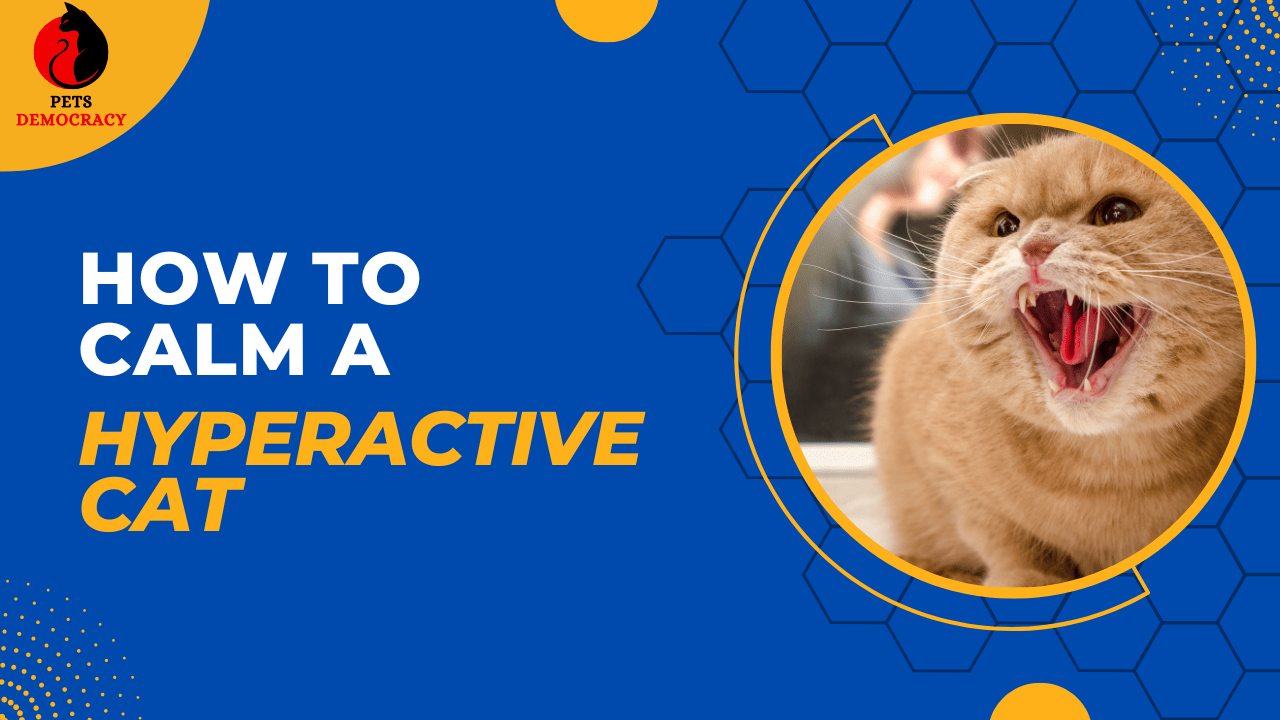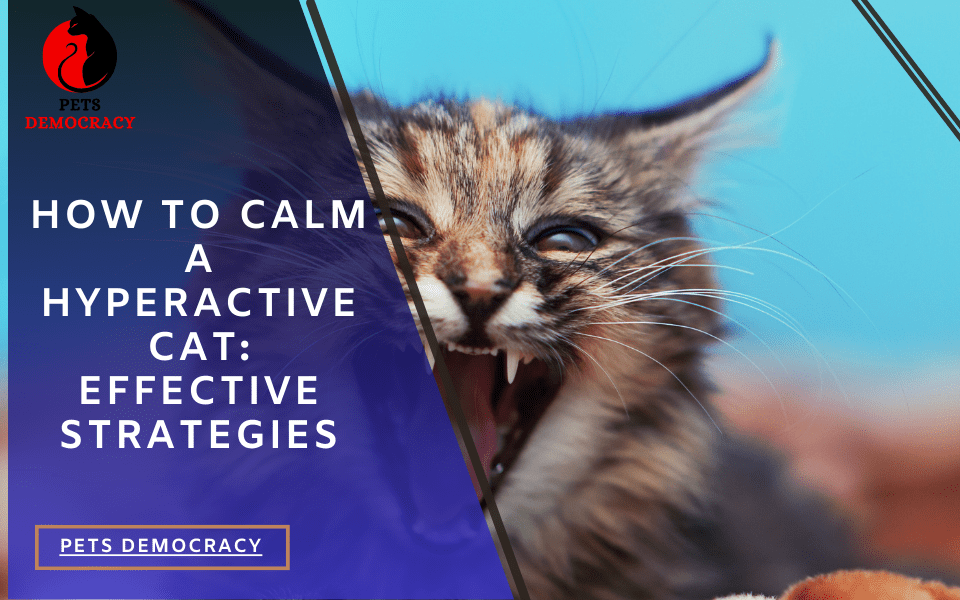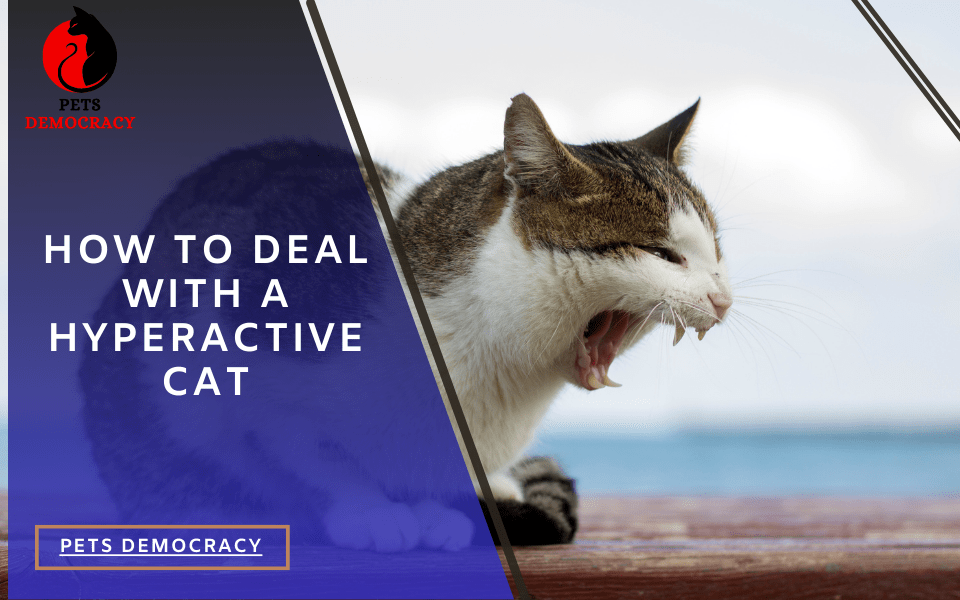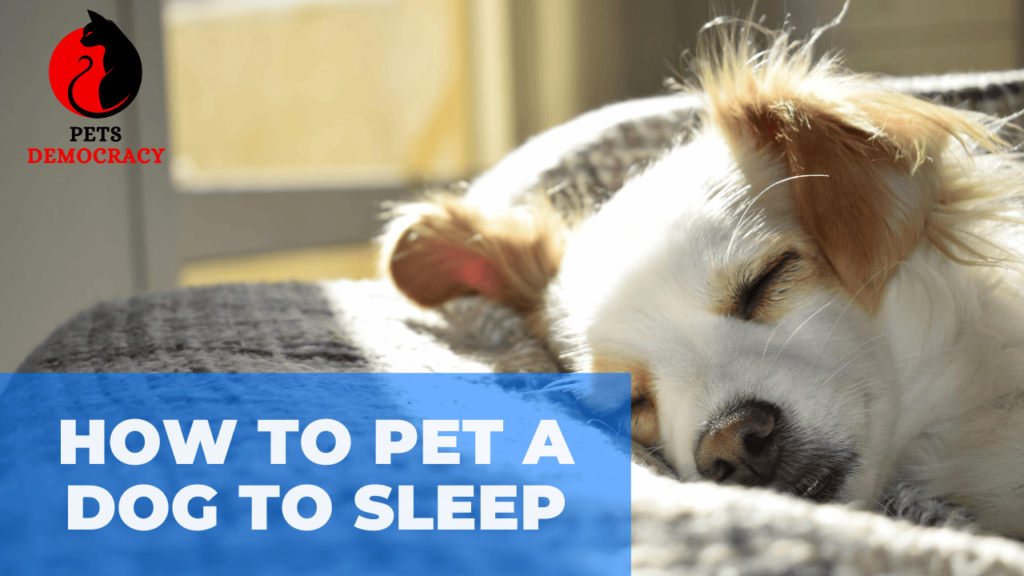
In this guide, we will explore how to calm a hyperactive cat, providing you with practical tips and strategies to help your feline companion find tranquility.
If you’re struggling with a hyperactive cat, you’re not alone. Many cat owners face the challenge of managing their energetic feline friends.
Various factors, including breed tendencies, age, and individual personality traits, can cause cat hyperactivity.
Understanding Hyperactive Cat Breeds
Some cat breeds are more prone to hyperactivity than others. Understanding your cat’s breed characteristics is important to manage their energy levels better. Hyperactive cat breeds often include:
- Abyssinian: Recognized for their lively and fun disposition.
- Siamese: Vocal and energetic, Siamese cats love to interact.
- Bengal: Highly active and curious, requiring plenty of stimulation.
- Oriental Shorthair: Intelligent and lively, always seeking attention.
Identifying the Causes of Hyperactivity in Cats
Before diving into how to calm a hyperactive cat, it’s essential to identify the underlying causes of their behavior. Common causes include:
- Boredom: Cats need mental and physical stimulation to stay content.
- Lack of Exercise: Without sufficient exercise, cats can become restless.
- Diet: Certain diets can affect a cat’s energy levels.
- Medical Conditions: Hyperthyroidism and other health issues can cause hyperactivity.
How to Calm a Hyperactive Cat: Effective Strategies

1. Provide Ample Physical Exercise
Regular physical exercise is one of the most effective ways to calm a hyperactive cat. Engaging your cat in activities that burn off their excess energy can help reduce hyperactivity.
Interactive Toys: Use toys that stimulate your cat’s hunting instincts, such as feather wands or laser pointers.
Play Sessions: Dedicate time each day for interactive play sessions. Aim for at least 15-20 minutes twice a day.
Climbing Structures: Invest in cat trees or shelves to give your cat vertical space to explore and climb.
2. Mental Stimulation and Enrichment
Mental stimulation is crucial for calming a hyperactive cat. Providing activities that challenge their mind can help keep them occupied and reduce excessive energy.
Puzzle Toys: Offer puzzle feeders or treat-dispensing toys to engage your cat’s problem-solving skills.
Training: Teach your cat new tricks or commands. Training sessions can be mentally stimulating and strengthen your bond.
Interactive Play: Use toys that require your cat to think and plan their moves, such as interactive mice or balls.
3. Establish a Routine
Cats thrive on routine. Establishing a consistent daily schedule can help reduce anxiety and hyperactivity.
Feeding Times: Stick to regular feeding times to provide structure.
Playtime: Schedule play sessions at the same time each day.
Sleep Routine: Create a calming bedtime routine to signal it’s time to wind down.
4. Create a Calm Environment
A calm and stress-free environment can significantly impact your cat’s behavior. Make changes to your home to promote relaxation.
Quiet Spaces: Provide quiet, comfortable areas where your cat can retreat and relax.
Soft Music: Play calming music or use white noise machines to create a soothing atmosphere.
Aromatherapy: Use cat-safe essential oils like lavender to promote relaxation. Ensure they are diffused in a well-ventilated area.
5. Monitor Their Diet
Diet plays a crucial role in your cat’s energy levels. Make sure the food your cat eats is healthy, appropriate for their age, and balanced.
High-Quality Food: Choose high-quality cat food with the right balance of nutrients.
Avoid Sugary Treats: Limit treats that contain high levels of sugar or artificial additives.
Regular Feeding Schedule: Avoid free-feeding and stick to regular meal times to prevent overeating.
How to Deal with a Hyperactive Cat

Dealing with a hyperactive cat requires patience and consistency. Here are additional tips to manage your cat’s behavior:
1. Positive Reinforcement
Use positive reinforcement to encourage calm behavior. Reward your cat with treats or affection when they exhibit calmness.
2. Avoid Overstimulation
Be mindful of overstimulation. Cats can become overwhelmed by too much play or attention. Learn to recognize signs of overstimulation, such as tail flicking or hissing.
3. Use Calming Products
Consider using calming products designed for cats. These can include pheromone diffusers, calming collars, or natural supplements like CBD oil.
FAQs about How to Calm a Hyperactive Cat
Q: Why is my cat so hyperactive?
Cats can be hyperactive for various reasons, including breed tendencies, age, diet, and lack of mental or physical stimulation. Identifying the root cause can help in managing their behavior.
Q: How can I calm my hyperactive kitten?
Kittens are naturally more energetic. Provide plenty of toys, interactive play, and a consistent routine to help manage their energy levels. As they grow older, they may naturally calm down.
Q: Are there specific toys that can help calm a hyperactive cat?
Yes, toys that simulate hunting behavior, such as feather wands, laser pointers, and puzzle feeders, can help burn off excess energy and provide mental stimulation.
Q: Can diet affect my cat’s hyperactivity?
A diet high in sugar or artificial ingredients can contribute to hyperactivity. Ensure your cat’s diet is balanced and appropriate for their age and health needs.
Q: How often should I play with my hyperactive cat?
Aim for at least two interactive play sessions of 15-20 minutes each day. Adjust the frequency and duration based on your cat’s energy levels and behavior.
Q: Can medical issues cause hyperactivity in cats?
Yes, conditions like hyperthyroidism can lead to increased energy and hyperactivity. If you notice sudden changes in your cat’s behavior, consult your veterinarian.
Q: What should I do if my cat’s hyperactivity becomes unmanageable?
If your cat’s hyperactivity is extreme or unmanageable, seek advice from a veterinarian or a feline behaviorist.
Conclusion
Understanding how to calm a hyperactive cat involves a combination of physical exercise, mental stimulation, routine, and environmental adjustments.
By addressing the root causes of your cat’s hyperactivity and implementing these strategies, you can help your feline friend achieve a calmer and more balanced state.
Remember, patience and consistency are key, and don’t hesitate to seek professional help if needed. Your efforts will lead to a happier, healthier, and more harmonious relationship with your cat.


